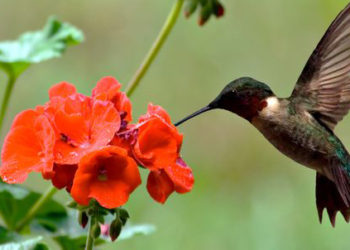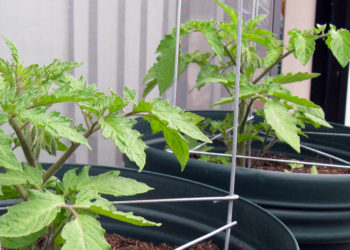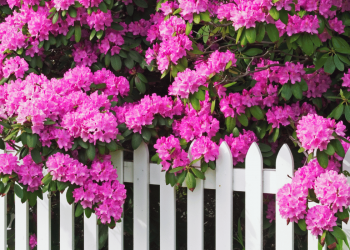Looking for ways to attract hummingbirds to your garden? You’re not alone! These small, vibrant birds add a splash of color and movement to a garden like few others can. But did you know that they are also important pollinators? Hummingbirds help to spread pollen and seeds between flowers as they feed on nectar. Bringing these tiny acrobats to your garden not only provides a delightful show for you, but also supports local ecosystems and contributes to their conservation.
Hummingbird Gardens: Design Tips
Designing a hummingbird garden can be a fun and rewarding project. The key is to create a space that is both functional and safe for these amazing birds.
Here are some tips:
- Plan your garden layout carefully. Consider the size and shape of your space, as well as where you want to plant your flowers and other plants. You’ll also want to think about the location of your garden in relation to other plants and hazards.
- Choose plants that will bloom at different times. This way, you can provide a steady supply of nectar for the hummingbirds throughout the season.
- Consider the types of insects that hummingbirds eat. Some plants, like bee balm and cardinal flower, can attract insects that hummingbirds like to eat.
- Choose plants that will be attractive to male hummingbirds. These birds use colorful flowers as a stage for their courtship rituals, so plants with bright, showy flowers can help attract them to your garden.
- Make sure your garden has open space around it. This will allow the hummingbirds to spot predators and escape if needed. At the same time, you’ll want to provide some shade and shelter for the hummingbirds, so consider planting a few larger bushes or trees near your garden.
4 Essential Things Every Hummingbird Garden Needs

A hummingbird garden is a special place where these beautiful birds can come to feed, rest, and nest. To meet these basic needs, there are four essential elements to consider: water, shelter and resting areas, nesting sites, and food.
Water
Hummingbirds need a supply of water to drink and with which to clean themselves. You can provide water by setting up a misting feature or sprinkler, or by using a decorative pond or birdbath with a misting feature. Hummingbirds will also enjoy showers, so consider extending a misting system to a portion of your flower garden.
Shelter and resting areas
Between feedings, hummingbirds need to rest and digest. They also need a safe place to rest at night if they are not in a nest. You can create a resting area by providing plants with dense foliage or by installing a hummingbird swing.
Nesting sites
Hummingbirds do not like to feel closed in and will not use artificial birdhouses or nesting boxes. Instead, they prefer to nest in trees or other natural sites. To create a suitable nesting environment, plant a variety of trees and shrubs that offer a range of branches and foliage for the hummingbirds to choose from. Avoid placing birdhouses, bat houses, or beehives near the hummingbird garden, as these can attract predators or compete with the hummingbirds for resources.
Food
Hummingbirds need a steady supply of nectar to fuel their high metabolism. To provide food for the hummingbirds, plant flowers that produce nectar and that bloom at different times throughout the season. You can also set up hummingbird feeders filled with a solution of four parts water to one part white granulated sugar. Be sure to clean the feeders regularly to prevent mold and bacteria from building up.
Bloom Times for Hummingbird Gardens

Bee Balm: Flowers July-August
Bleeding Heart: Flowers May-June
Bugleweed: Flowers May-June
Cardinal Flower: Flowers July-August
Coral Bells: Flowers June-September
Columbine: Flowers May-June
Dahlia: Flowers July-October
Daylilies: Flowers June-July
Delphinium: July-August
Fuchsia: Flowers Continuously
Hollyhock: Flowers May-June
Lupine: Flowers May-July
Penstemon: Flowers June-July
Petunia: Flowers Continuously
Phlox: Flowers July-October
Salvia: Flowers June-July
Snapdragon: Flowers Continuously
Zinnias: Flowers Continuously
Clematis: Flowers April-August
Honeysuckle: June-August
Trumpet Vine: Flowers July-September
Hydrangea: Flowers July-August
Rhododendron: Flowers May-June
Choosing Plants for Attracting Hummingbirds
When choosing plants for a hummingbird garden, it’s important to remember that hummingbirds are primarily interested in two food sources: nectar and insects. So choose plants that produce plenty of nectar and that also attract small insects. Another hot tip is to look for native species that are already familiar to the hummingbirds in your area. These plants will be more likely to attract hummingbirds, as the birds are already familiar with them and know that they are a reliable source of food.
It’s also a good idea to choose plants that have bright red or orange flowers, as these colors are particularly attractive to hummingbirds. Opt for flowers with long, narrow openings or tubes, as they are easy for hummingbirds to access and often contain a lot of nectar. Some examples of plants that are good for a hummingbird garden include bugleweed, bleeding heart, columbine, hollyhock, lungwort, lupine, petunia, bee balm, blazing star, cardinal flower, coral bells, dahlia, daylilies, delphinium, fuchsia, gladiola, nasturtium, penstemon, phlox, salvia, snapdragons, zinnias, cigar plants, passion flower, clematis, honeysuckle, tecoma, manettia, and mandevilla.
Some plants don’t produce nectar but can still be useful in a hummingbird garden. Hydrangeas and rhododendrons, for example, are known for attracting tiny insects that hummingbirds eat. While these plants may not be as effective at drawing in hummingbirds as nectar-producing plants, they can still be a valuable addition to a hummingbird garden.

Maintaining Your Hummingbird Garden
Maintaining a hummingbird garden is not difficult, but it does require some basic care to keep it looking good and providing the right resources for the birds. Here are some tips for maintaining your hummingbird garden:
- Use compost and natural fertilizers to enrich the soil and promote the growth of flowers. Avoid using commercial fertilizers, as they may contain chemicals that are harmful to hummingbirds.
- Deadhead flowers regularly to keep them blooming and the plants healthy.
- Avoid using pesticides and herbicides in your hummingbird garden or any nearby vegetable gardens. These chemicals can be harmful to the birds and may end up in the nectar they consume.
- Consider setting out overripe fruit to attract fruit flies, which hummingbirds love to eat.
- Keep your feeders clean and filled with fresh nectar to ensure that the hummingbirds have a consistent food source.
Ready to get started on your hummingbird garden? Check out our collection of plants for hummingbirds and find your faves!





No Comments